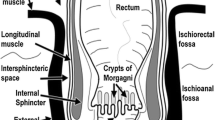Abstract
Voiding urosonography (VUS) entails the intravesical administration of US contrast agent (USCA) for the diagnosis of vesicoureteric reflux (VUR). VUS is now recognized as a practical, safe, radiation-free modality with comparable or higher sensitivity than direct radionuclide cystography (DRNC) and voiding cystourethrography (VCUG), respectively. An extensive review of the literature regarding both the procedural aspects and comparative diagnostic values of VUS has been published (Darge Pediatr Radiol 38:40–63, 2008a, b). The aim of this review is to provide an update on various facets of VUS that have taken place since the publication of the above-mentioned two reviews.

Similar content being viewed by others
References
Darge K (2008) Voiding urosonography with ultrasound contrast agents for the diagnosis of vesicoureteric reflux in children. I. Procedure. Pediatr Radiol 38:40–53
Darge K (2008) Voiding urosonography with US contrast agents for the diagnosis of vesicoureteric reflux in children. II. Comparison with radiological examinations. Pediatr Radiol 38:54–63
Demède D, Mouriquand P (2008) Vesicoureteral reflux: why we can’t agree on its management! An evidence based approach. Arch Esp Urol 61:160–166
Marks SD, Gordon I, Tullus K (2008) Imaging in childhood urinary tract infections: time to reduce investigations. Pediatr Nephrol 23:9–17
Lim R (2009) Vesicoureteral reflux and urinary tract infection: evolving practices and current controversies in pediatric imaging. AJR 192:1197–1208
Lee MD, Lin CC, Huang FY et al (2009) Screening young children with a first febrile urinary tract infection for high-grade vesicoureteral reflux with renal ultrasound scanning and technetium-99 m-labeled dimercaptosuccinic acid scanning. J Pediatr 154:797–802
Riccabona M, Avni FE, Blickman JG et al (2008) Imaging recommendations in paediatric uroradiology: minutes of the ESPR workgroup session on urinary tract infection, fetal hydronephrosis, urinary tract ultrasonography and voiding cystourethrography, Barcelona, Spain, June 2007. Pediatr Radiol 38:138–145
McLaren CJ, Simpson ET (2001) Direct comparison of radiology and nuclear medicine cystograms in young infants with vesico-ureteric reflux. BJU Int 87:93–97
Papadopoulou F, Efremidis SC, Oiconomou A et al (2002) Cyclic voiding cystourethrography: is vesicoureteral reflux missed with standard voiding cystourethrography? Eur Radiol 12:666–670
Quaia E (2007) Microbubble ultrasound contrast agents: an update. Eur Radiol 17:1995–2008
Darge K (2002) Diagnosis of vesicoureteral reflux with ultrasonography. Pediatr Nephrol 17:52–60
Quaia E (2007) Contrast-specific ultrasound techniques. Radiol Med 112:473–490
Zimbaro G, Ascenti G, Visalli C (2007) Contrast-enhanced ultrasonography (voiding urosonography) of vesicoureteral reflux: state of the art. Radiol Med 112:1211–1224
Piscitelli A, Galiano R, Serrao F et al (2008) Which cystography in the diagnosis and grading of vesicoureteral reflux? Pediatr Nephrol 23:107–110
Duran C, Valera A, Alguersuari A et al (2009) Voiding urosonography: the study of the urethra is no longer a limitation of the technique. Pediatr Radiol 39:124–131
Papadopoulou F, Anthopoulou A, Siomou E et al (2009) Harmonic voiding urosonography with a second-generation contrast agent for the diagnosis of vesicoureteral reflux. Pediatr Radiol 39:239–244
Kopac M, Riccabona M, Haim M (2009) Contrast-enhanced voiding urosonography and genitography in a baby with ambiguous genitalia and urogenital sinus. Ultraschall Med 30:299–300
Galloy MA, Guillemin F, Couture A et al (2008) Voiding ultrasonography: evaluation of the detection of vesicoureteral reflux based on the review of digital ultrasound clips. Ultraschall Med 29:53–59
Claudon M, Cosgrove D, Albrecht T (2008) Guidelines and good clinical practice recommendations for contrast enhanced ultrasound (CEUS)—update 2008. Ultraschall Med 29:28–44
Kljucevsek D, Kljucevsek T, Kersnik Levart T et al (2009) Ureteric jet Doppler waveform: is it a reliable predictor of vesicoureteric reflux in children? Pediatr Nephrol 24:313–318
Miller DL, Averkiou MA, Brayman AA et al (2008) Bioeffects considerations for diagnostic ultrasound contrast agents. J Ultrasound Med 27:611–632
Miller DL, Dou C, Wiggins RC et al (2007) An in vivo rat model simulating imaging of human kidney by diagnostic ultrasound with gas-body contrast agent. Ultrasound Med Biol 33:129–135
Miller DL, Dou C, Wiggins RC (2008) Frequency dependence of kidney injury induced by contrast-aided diagnostic ultrasound in rats. Ultrasound Med Biol 34:1678–1687
Darge K, Ghods S, Zieger B et al (2001) Reduction in voiding cystourethrographies after the introduction of contrast enhanced sonographic reflux diagnosis. Pediatr Radiol 31:790–795
Giordano M, Marzolla R, Puteo F (2007) Voiding urosonography as first step in the diagnosis of vesicoureteral reflux in children: a clinical experience. Pediatr Radiol 37:674–677
Wilson SR, Greenbaum LD, Goldberg BB (2009) Contrast-enhanced ultrasound: what is the evidence and what are the obstacles? AJR 193:55–60
Greenbaum L, Burns P, Copel J et al (2007) American Institute of Ultrasound in Medicine recommendations for contrast-enhanced liver ultrasound imaging clinical trials. J Ultrasound Med 26:705–716
Ellison JS, Maxfield CM, Wiener JS (2009) Voiding cystography practices and preferences of North American pediatric urologists. J Urol 182:299–304
Author information
Authors and Affiliations
Corresponding author
Rights and permissions
About this article
Cite this article
Darge, K. Voiding urosonography with US contrast agent for the diagnosis of vesicoureteric reflux in children: an update. Pediatr Radiol 40, 956–962 (2010). https://doi.org/10.1007/s00247-010-1623-9
Received:
Revised:
Accepted:
Published:
Issue Date:
DOI: https://doi.org/10.1007/s00247-010-1623-9




